Here I continue my explorations of the South Africa springtime flora. The organizers of the 1998
 |
| A seaside cliff, with and Mesembryanthemum |
International Botanic Gardens Conservation Congress, which was held at Kirstenbosch Botanic Gardens in Capetown, arranged for several excellent field trips before and after the meetings, and I was an eager participant. The first took us eastward through the coastal fynbos. Fynbos is the Afrikaaner term for Mediterranean scrub, what we would call chaparral in California. The vegetation is mostly shrubby, but quite varied, as rainfall varies with topography and distance from the coast. It is an incredibly rich vegetation, even though drought conditions prevail for more than half the year. Winter rainfall brings the semi-dormant vegetation to life, and flowering amongst the herbs and shrubs reaches its peak in in the spring months of September and October. This is the home of the many species of Proteaceae featured in Part 2 of this series. Here we will explore some of the other characteristic genera.
A resident of California or the Mediterranean would feel quite at home driving up to a coastal cliff, for many of the cultivated plants in these regions come from South Africa, including the ubiquitous ice plant. Here though we face out to Anarctica, though safely removed from it enough to enjoy a pleasant subtropical climate.
 |
| Storm clouds gather off of the south coast. |
Isolated from other similar vegetation by thousands of miles, the South African flora contains many unique species, and a number of genera that have exploded into hundreds of species here.
Erica is a genus of heathers, for which the blueberry family takes its name. There are 860 species altogether, but of these 660 occur in South Africa. heathers are smallish evergreen shrubs, with needle-like leaves and flowers shaped like bells, trumpets and tubes, and ranging in color from red to pink, white and yellow.
 |
| Erica regia |
 |
| An unidentified white Erica. |
 |
| Erica oblongiflora |
 |
| Erica mammosa |
Another locally mind-boggling genus is
Pelargonium, in the Geraniaceae. Of the 200 species in the genus, most are native to South Africa. The others are widely scattered in isolated corners of the old world. Aloes represent another major genus, with 500 species in southern and eastern Africa, Madagascar and the Arabic Peninsula. There are also an abundance of legumes, composites (Asteraceae), Mesembryanthaceae, and Oxalidaceae. We will see in future installments families that have diversified in drier parts of the country: the Iridaceae, Asclepiadaceae, and the Euphorbiaceae.
 |
| Pelargonium fulgidum |
 |
| Pelargonium cordatum |
 |
| A brilliant red Pelargonium, apparently a variant or close relative of P. fulgidum. |
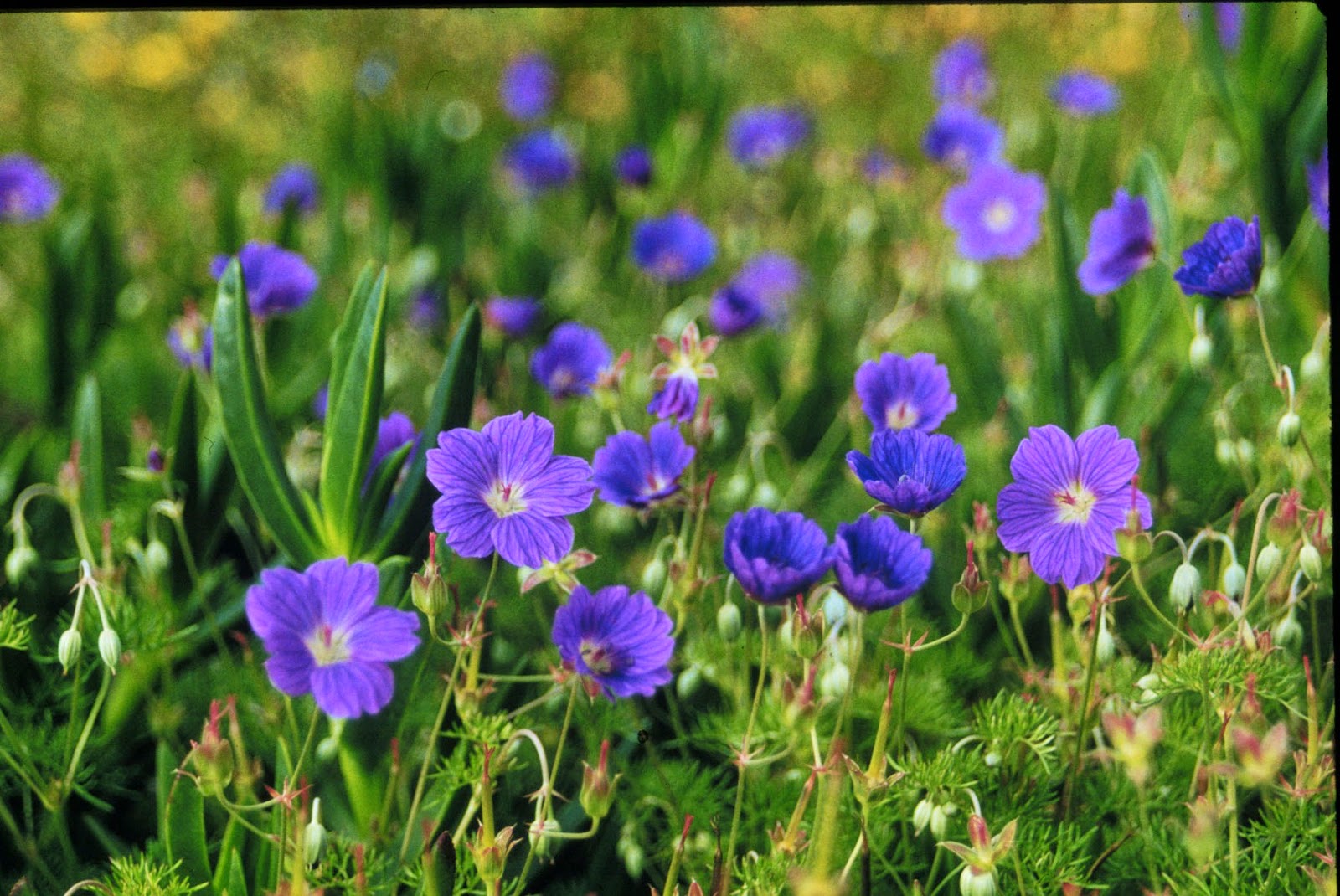 |
True Geraniums are quite different from Pelargonium, though in the same family. Here is
Geranium incanum |
 |
| Oxalis purpurea |
 |
| Oxalis pes-caprae |
 |
No, this picture is not in sideways. These are the
massive branches of a giant Outeniqua yellowwood
tree (Podocarpus falcatus) in the Tsitsikamma
Forest. Hanging from the branches is a lichen
reminiscent of the Spanish moss in Florida. |
As we traveled along the coast, stopping for numerous wildflower photoshoots, we gradually encountered lusher vegetation. Were stunned, however, as the road descended into a lush forest with massive
Podocarpus trees and tree ferns east of the city of George. We were in the Garden Route National Park in the Tsitsikamma forest, which has all the markings of a temperate rain forest. To the east of this point the rainfall is mainly in the summer, as is true up the east coast of Africa and in the savannas to the north. Here in Tsitsikamma the winter rainfall patterns of the southwest overlap with the summer rains of the east, and the result is this unexpected verdant forest.
As is my custom, I will forgo further words, and allow the photographs to continue with the story. I have not identified all of these, and some of my identifications may prove to be wrong. I welcome any corrections!
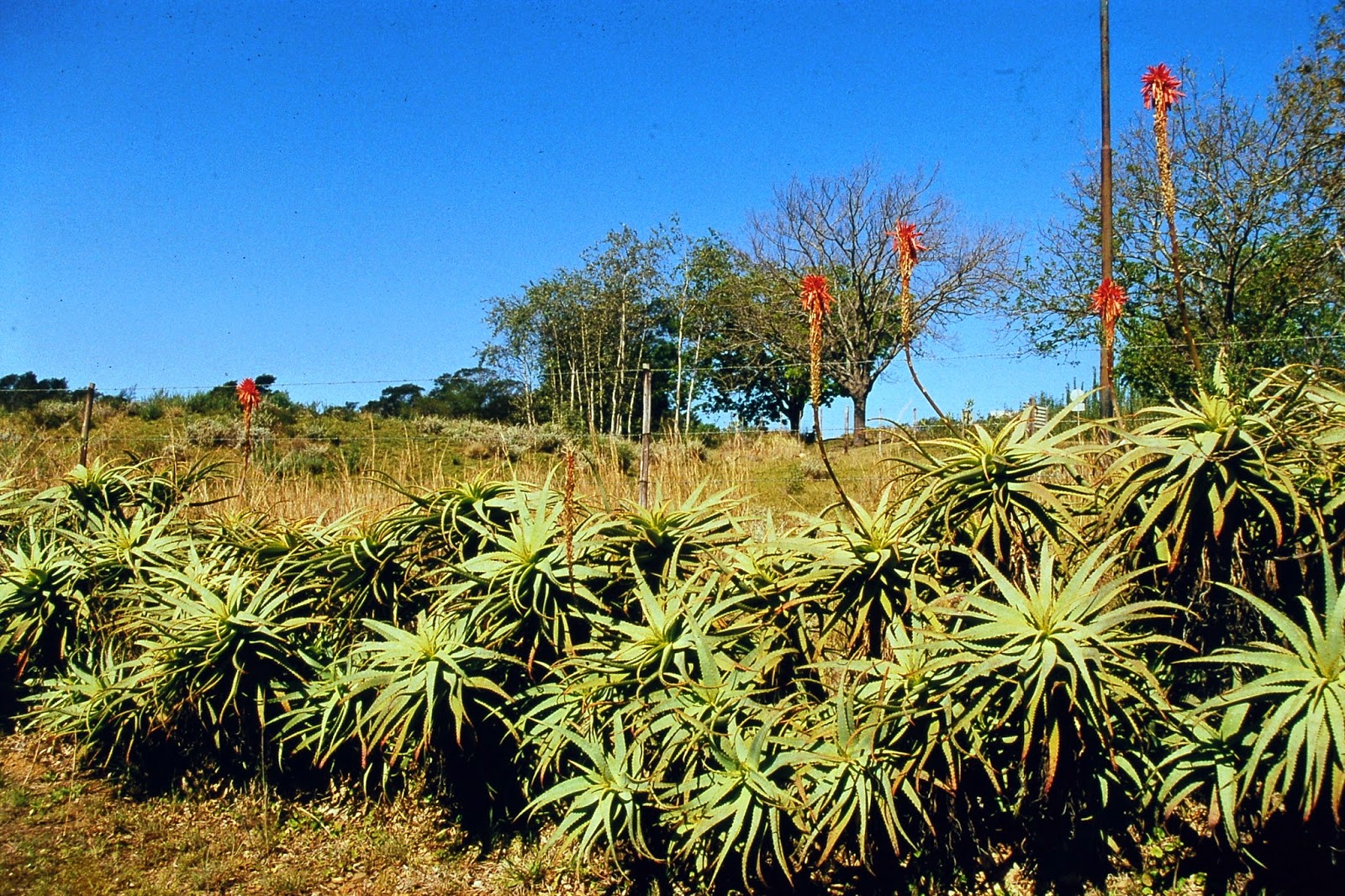 |
| Aloe arborescens. |
 |
| Aloe ferox |
 |
Aloe ciliaris, the "climbing aloe," is unusual
for its elongate, rambling stems. |
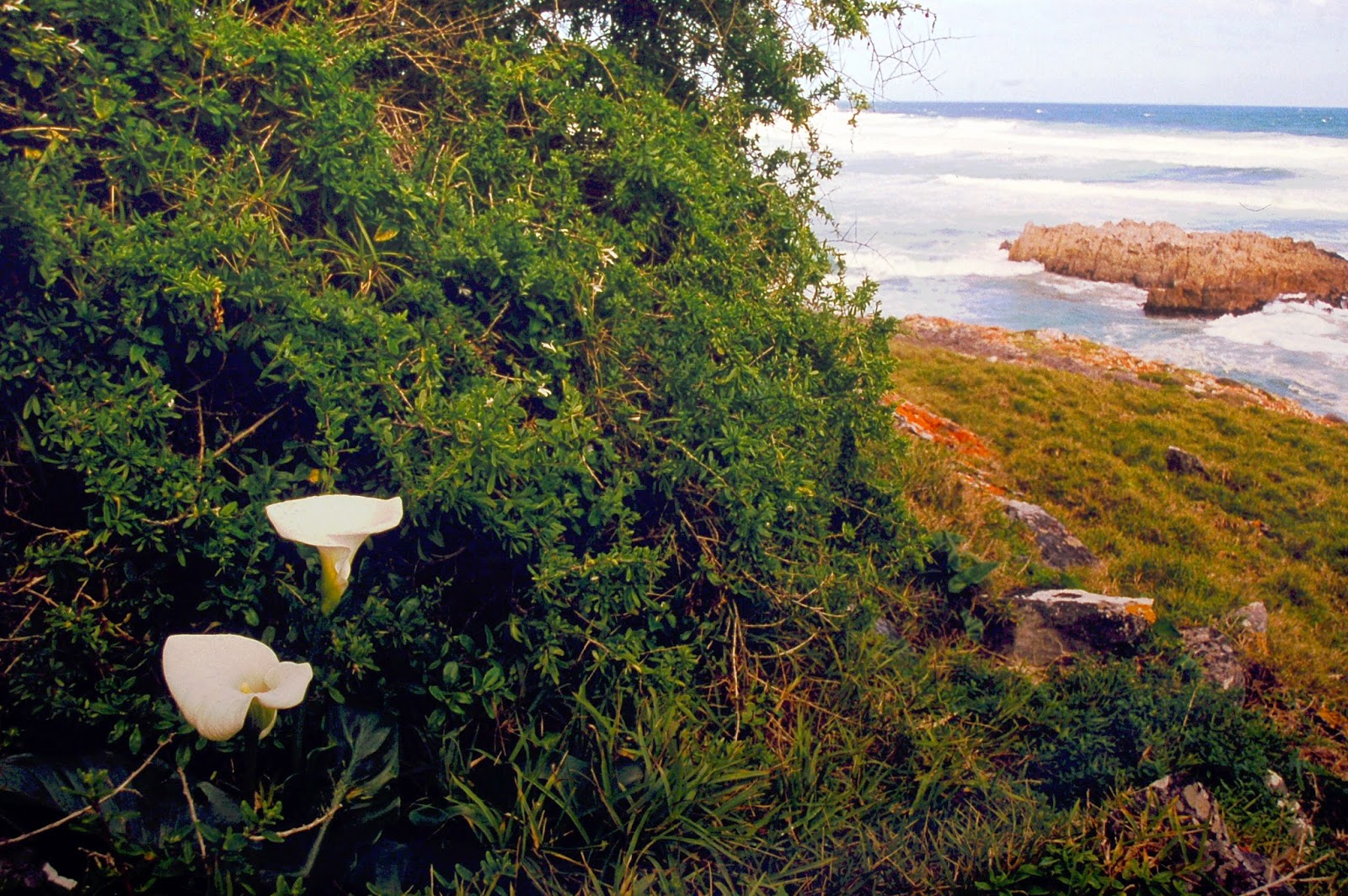 |
| A calla lily (Zantedeschia) finds a moist niche at the base of a coastal cliff. |
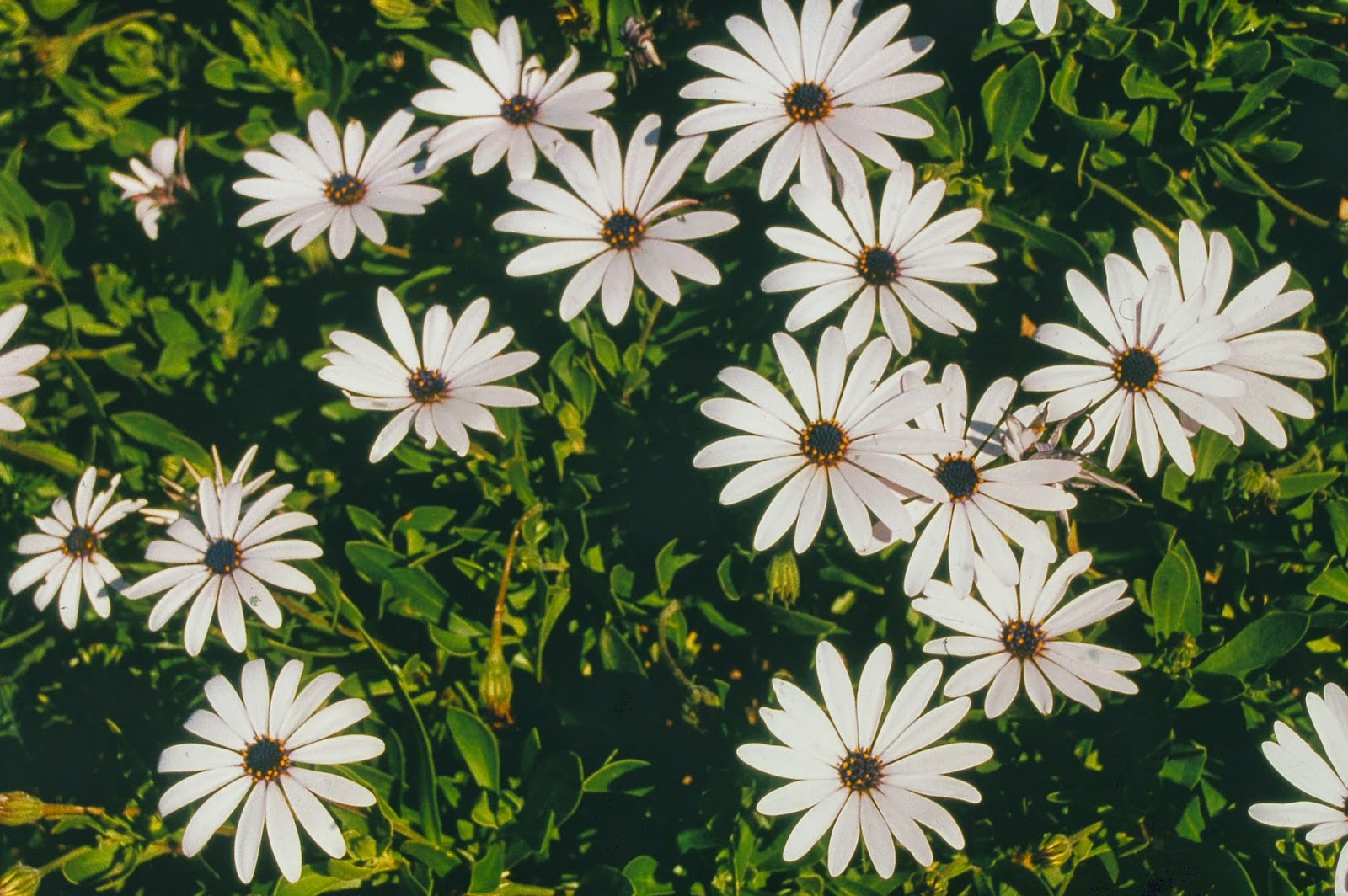 |
Dimorphotheca nudicaulis is one of many species of the Asteraceae found
only in South Africa. |
 |
An unidentified member of the Hibiscus Family
(Malvaceae) |
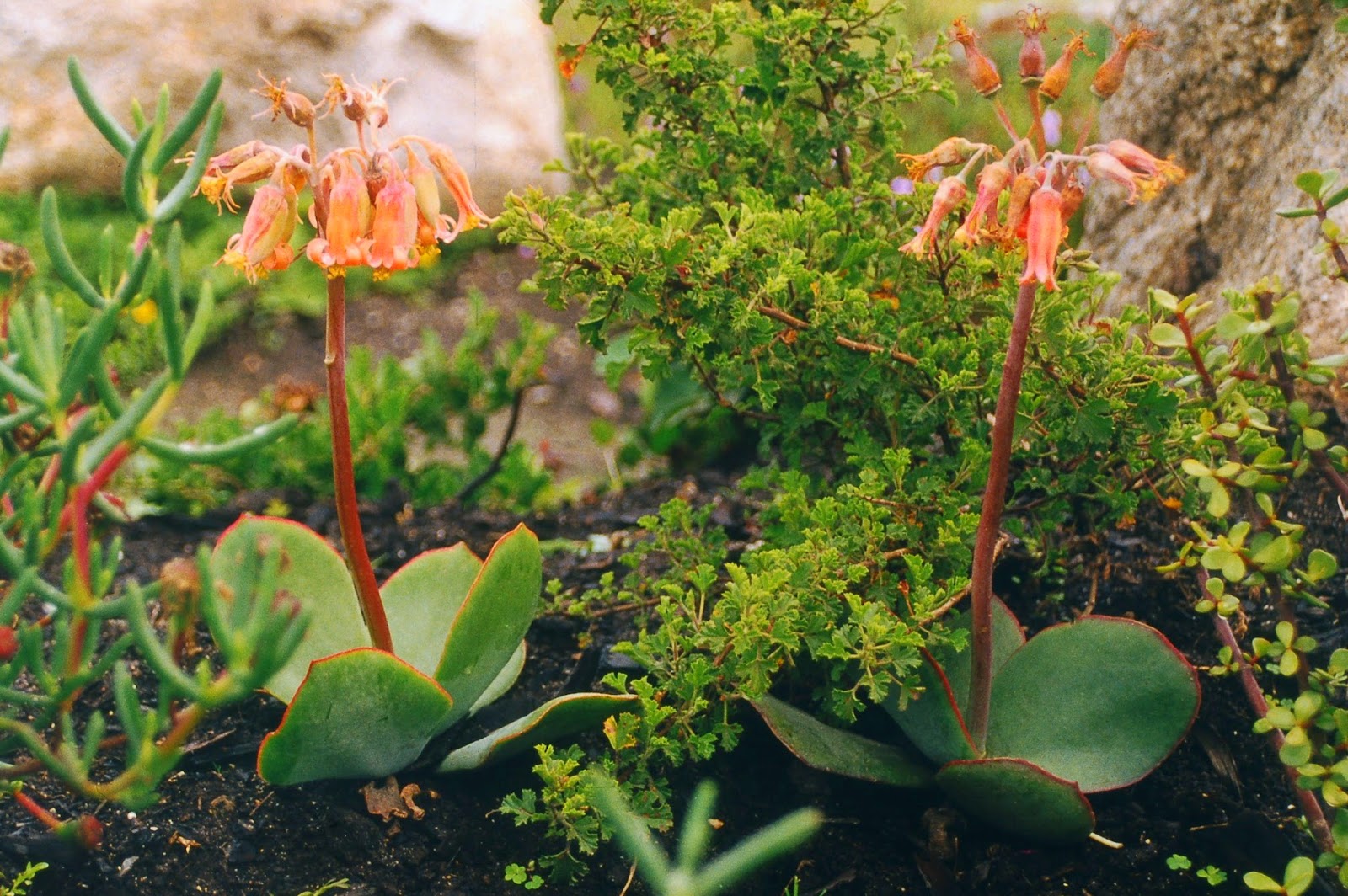 |
| Cotyledon orbiculata (Crassulaceae) is a common sight in the fynbos. |
 |
This colorful member of the legume family
(Fabaceae) appears to be a species of Indigofera. |
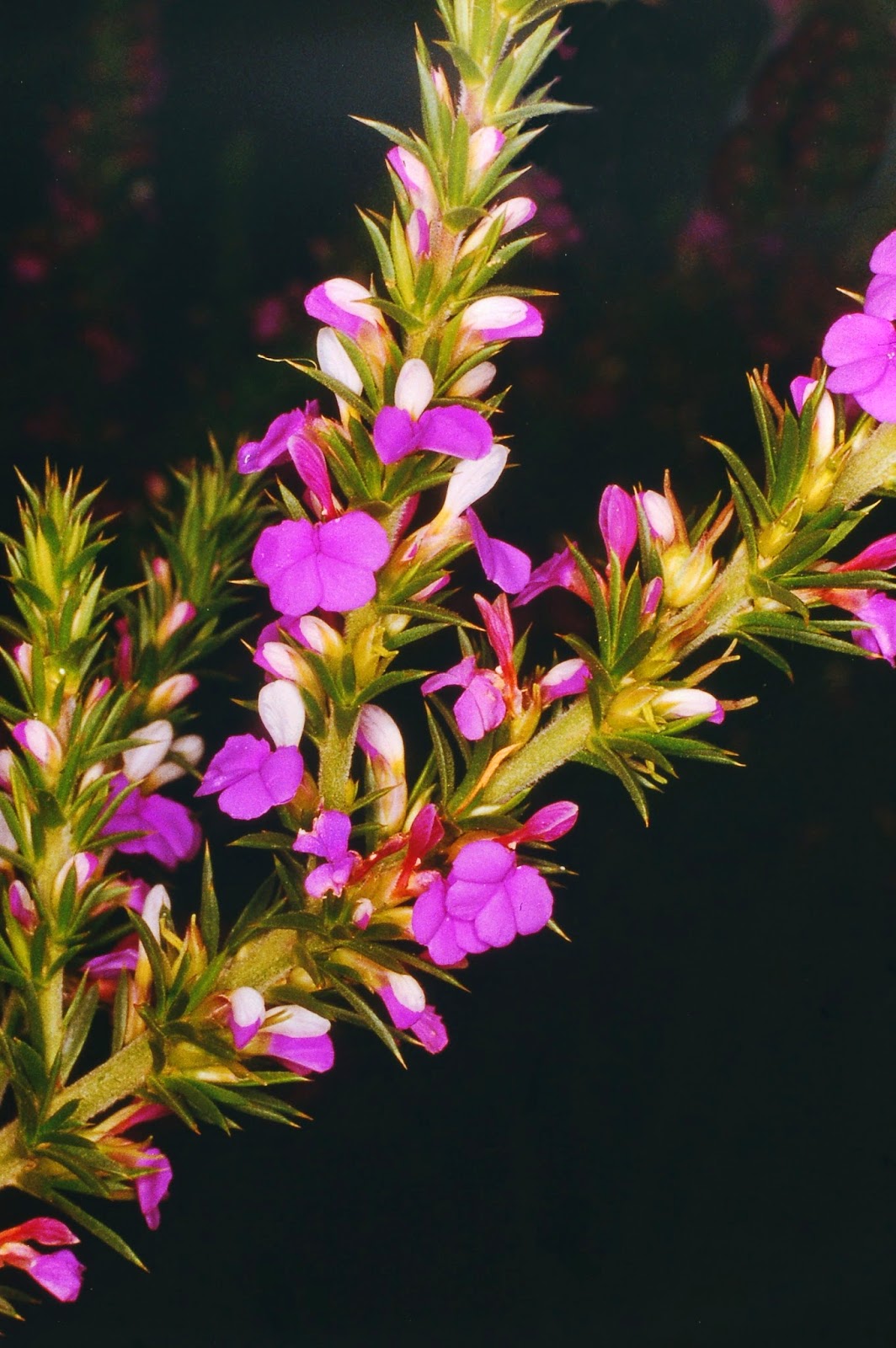 |
Muraltia heisteria resembles a legume but is in
the Polygalacaeae. |
 |
| Sutherlandia montana is a colorful legume of the fynbos. |
 |
| The flowers of Drosera aliciae arise from typical sundew rosettes (above right). |
 |
| Drosera cistiflora has long, upright stems. |
 |
| Anisodonta cabrosis a showy member of the Hibiscus family (Malvaceae). |
 |
A white-flowered member of the genus
Nemesia, in the Snapdragon family |
 |
Tritoniopsis caffra pokes up above the
fynbos vegetation. It is a member of the
Iridaceae, about which we'll hear
a great deal more in the next installment. |
 |
| A pink-flowered Nemesia |
 |
| Erica versicolor |
 |
Berzelia abrotonoides (Bruniaceae) is a
shrub with dense clusters of small
flowers |
 |
An orange-flowered Oxalis, probably a
form of O. massoniana |
 |
| The southern coast of South Africa is probably what much of coastal California looked like many years ago. |





